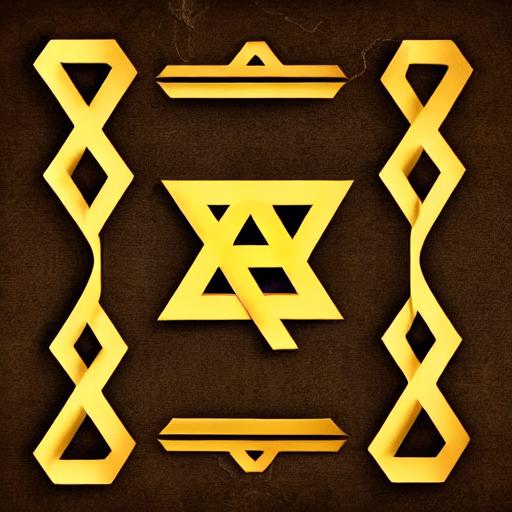Among the many fascinating numerical connections in gematria, few are as culturally significant as the relationship between the number 18 and the concept of "life" in Jewish tradition. This connection has transcended purely mystical contexts to become a practical element of Jewish cultural practices, influencing everything from charitable donations to gift-giving customs.

The Mathematical Connection
The association between 18 and life stems from Hebrew gematria, the alphanumerical system that assigns numerical values to Hebrew letters. In Hebrew, each letter corresponds to a specific number. The Hebrew word for "life" is "chai" (חי), which consists of two letters: chet (ח) and yud (י). According to the standard gematria values:
- Chet (ח) = 8
- Yud (י) = 10
When added together, these values equal 18, thus creating the powerful association between the number 18 and the concept of life in Jewish tradition. This seemingly simple mathematical connection has profound implications that have resonated throughout Jewish history and practice.
Cultural Impact and Traditions
The 18 = "chai" connection has permeated Jewish cultural practices in numerous ways:
Charitable Giving
Perhaps the most widespread application of this numerical connection is in charitable giving. Many Jews choose to donate in multiples of 18 ($18, $36, $180, etc.) as a way of metaphorically "giving life" through their contribution. This practice, known as giving "chai," transforms a monetary donation into a symbolic affirmation of life and its continuity.
Major Jewish charities and fundraising campaigns often structure their donation tiers around multiples of 18, with special recognition levels at $18, $36 (double chai), $54 (triple chai), and so on. During times of community crisis or celebration, donation amounts based on 18 become especially prevalent, reinforcing community solidarity through this numerical symbol.
Gift-Giving Practices
The tradition extends to personal gift-giving as well. Monetary gifts for weddings, bar/bat mitzvahs, and other life cycle events are commonly given in multiples of 18. A gift of $36 or $180 carries additional meaning beyond the monetary value—it represents a wish for a long and healthy life for the recipient.
This custom is so deeply ingrained that check amounts ending in 18 are immediately recognized as intentional by Jewish recipients, who understand the implicit blessing contained in the number. Even non-monetary gifts are sometimes purchased with a price point of 18 or its multiples specifically in mind.
The Chai Symbol
Beyond numerical usage, the Hebrew letters that spell "chai" (חי) have become a popular symbol in Jewish jewelry and art. Many Jews wear chai pendants as a connection to their heritage and as an affirmation of life. These pendants became especially popular after the Holocaust, serving as a powerful statement of Jewish survival and continuity in the face of attempted annihilation.
The visual symbol consists of the two Hebrew letters designed to flow together in an aesthetically pleasing way, often crafted in gold or silver. The chai symbol appears not only in personal jewelry but also in synagogue decorations, ritual objects, and Jewish home décor, creating visual reminders of life's sanctity throughout Jewish spaces.
Historical and Religious Significance
The importance of 18 and "chai" extends deep into Jewish religious thought and historical experience:
The Sanctity of Life in Judaism
The prominence of the chai symbol and the number 18 reflects Judaism's central emphasis on the sanctity of human life. The Torah and Talmud consistently prioritize the preservation of life above almost all other religious obligations. This core value is enshrined in the principle of "pikuach nefesh," which holds that the preservation of human life overrides virtually all other religious rules.
In Jewish tradition, saving a single life is considered equivalent to saving an entire world, and the number 18, through its connection to "chai," serves as a constant numerical reminder of this fundamental value. The pervasiveness of 18 in Jewish cultural practices reinforces this life-affirming perspective at every turn.
The Eighteen Benedictions
Another significant connection to the number 18 in Jewish tradition is the Amidah prayer, also known as the Shemoneh Esreh (literally "eighteen" in Hebrew). This central prayer of the Jewish liturgy originally consisted of 18 benedictions (though a 19th was later added). The numerical alignment between this foundational prayer and the gematria value of "chai" is seen by many as a meaningful connection—the prayer, recited three times daily by observant Jews, becomes another way of affirming life through the symbolism of 18.
Each repetition of this prayer, with its 18 blessings, reinforces the celebration of life that lies at the heart of Jewish practice. Though the connection to "chai" may not have been the original reason for the prayer's structure, the numerical coincidence adds layers of meaning for modern practitioners.
Historical Resilience
The emphasis on "chai" and 18 took on additional significance following periods of persecution in Jewish history. After the Holocaust especially, the affirmation of life represented by chai became a powerful symbol of Jewish survival and resilience. The chai symbol and the number 18 emerged as statements of defiance against those who sought to extinguish Jewish life.
In Israel, the toast "l'chaim" ("to life!") carries this same spiritual weight—a recognition of survival against historical odds and a celebration of life's continuity. The numerical value 18 silently undergirds this toast, connecting modern celebrations to ancient numerical traditions.
Mathematical Extensions
The 18 = "chai" connection has inspired further numerical explorations:
Multiples of 18
Since 18 represents life, multiples of 18 are often interpreted as amplifications of this life-affirming energy:
- 36 (2 × 18): Double chai, representing two lives or a partnership
- 54 (3 × 18): Triple chai, sometimes associated with a complete family unit
- 72 (4 × 18): Quadruple chai, connected to the 72 Divine Names in Kabbalistic tradition
- 90 (5 × 18): Quintuple chai, associated with multiple generations
These multiples appear in donation amounts, anniversary celebrations, and other numerical contexts within Jewish communities. Each multiple carries its own nuanced associations while maintaining the core connection to life.
Connections to Other Significant Numbers
In more advanced gematria calculations, practitioners sometimes note that 18 × 26 = 468. The significance lies in the fact that 26 is the gematria value of God's name (יהוה, the Tetragrammaton), so this multiplication symbolically connects life (18) with divinity (26). Some interpreters see this as representing the divine source of all life.
Similarly, when the numerical values of the Hebrew word for "good" (טוב, tov = 17) is paired with the value of "life" (חי, chai = 18), they sum to 35, which is the value of "אך" (ach), meaning "only" or "surely." This creates the phrase "surely good," reinforcing the positive associations of life in Hebrew numerical symbolism.
Modern Applications
The 18 = "chai" connection continues to find relevance in contemporary contexts:
Digital Culture
In digital communications, the number 18 often appears as a subtle identifier of Jewish cultural connection. Jewish organizations incorporate 18 into website URLs, email addresses, and social media handles as a way of embedding cultural meaning into digital identities. Similarly, hashtags incorporating 18 create community connection points in online spaces.
Jewish memes and internet humor sometimes play with the 18 connection, creating in-group recognition through this numerical reference. These digital expressions represent modern extensions of an ancient alphanumerical tradition.
Business and Marketing
Jewish-owned businesses sometimes incorporate 18 into pricing strategies, company names, or founding dates. For example, a product might be priced at $18 instead of $20, or a business might choose to open on the 18th of a month. These decisions embed cultural meaning into commercial practices.
In marketing to Jewish consumers, the number 18 often appears in advertising campaigns, special offers, or membership tiers. This creates cultural resonance with the target audience through numerical symbolism that might go unnoticed by others.
Beyond Judaism
While the 18 = "chai" connection is primarily associated with Jewish tradition, awareness of this numerical significance has spread to other cultural contexts:
Interfaith Understanding
As interfaith dialogue has increased, the significance of 18 in Jewish tradition has become more widely known among other religious groups. Some interfaith organizations intentionally incorporate the number 18 into joint initiatives as a way of honoring Jewish participants and traditions.
Non-Jewish friends of Jewish individuals often learn to give gifts in multiples of 18 as a way of showing cultural sensitivity and respect. This numerical knowledge becomes a small but meaningful bridge between different traditions.

Broader Cultural Influence
The concept of numerically encoding important values has parallels in many cultures. The Jewish tradition of equating 18 with life offers an accessible example of how alphanumerical systems can create layers of meaning beyond literal text. This has influenced comparative religious studies and cultural anthropology, providing a clear illustration of how mathematical systems can carry profound cultural significance.
Conclusion
The equation of 18 with "life" in Jewish tradition offers a fascinating glimpse into how mathematical systems can become vehicles for cultural meaning and spiritual values. What began as a Simple Gematria calculation—the sum of two Hebrew letters—has blossomed into a rich symbolic language that reinforces one of Judaism's most fundamental values: the sanctity and celebration of life.
From charitable donations to jewelry, from prayers to toasts, the number 18 weaves through Jewish practice as a constant numerical affirmation of life's preciousness. In a tradition that has faced numerous historical threats to its survival, the persistence of this life-affirming number takes on additional poignancy and power.
Whether you encounter the number 18 in a donation request, a gift amount, a piece of jewelry, or a prayer, understanding its connection to "chai" opens a window into how mathematics, language, and spirituality can intertwine to create meaning that transcends each individual element. In the simple equation 8 + 10 = 18, we find not just a mathematical fact, but a cultural treasure that continues to enrich Jewish life and practice.
